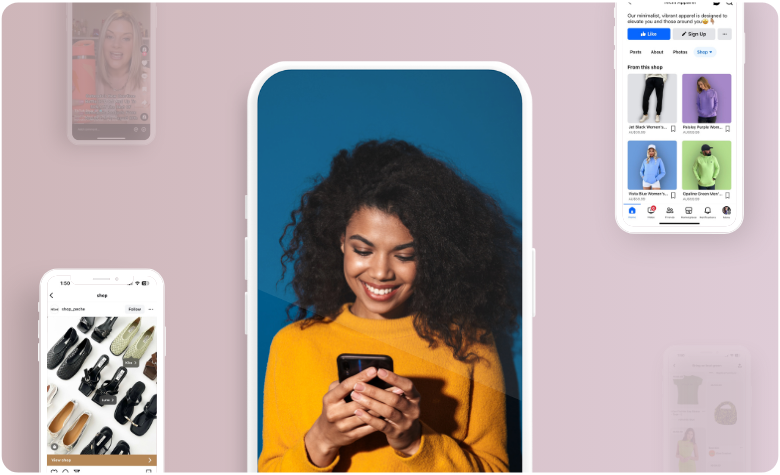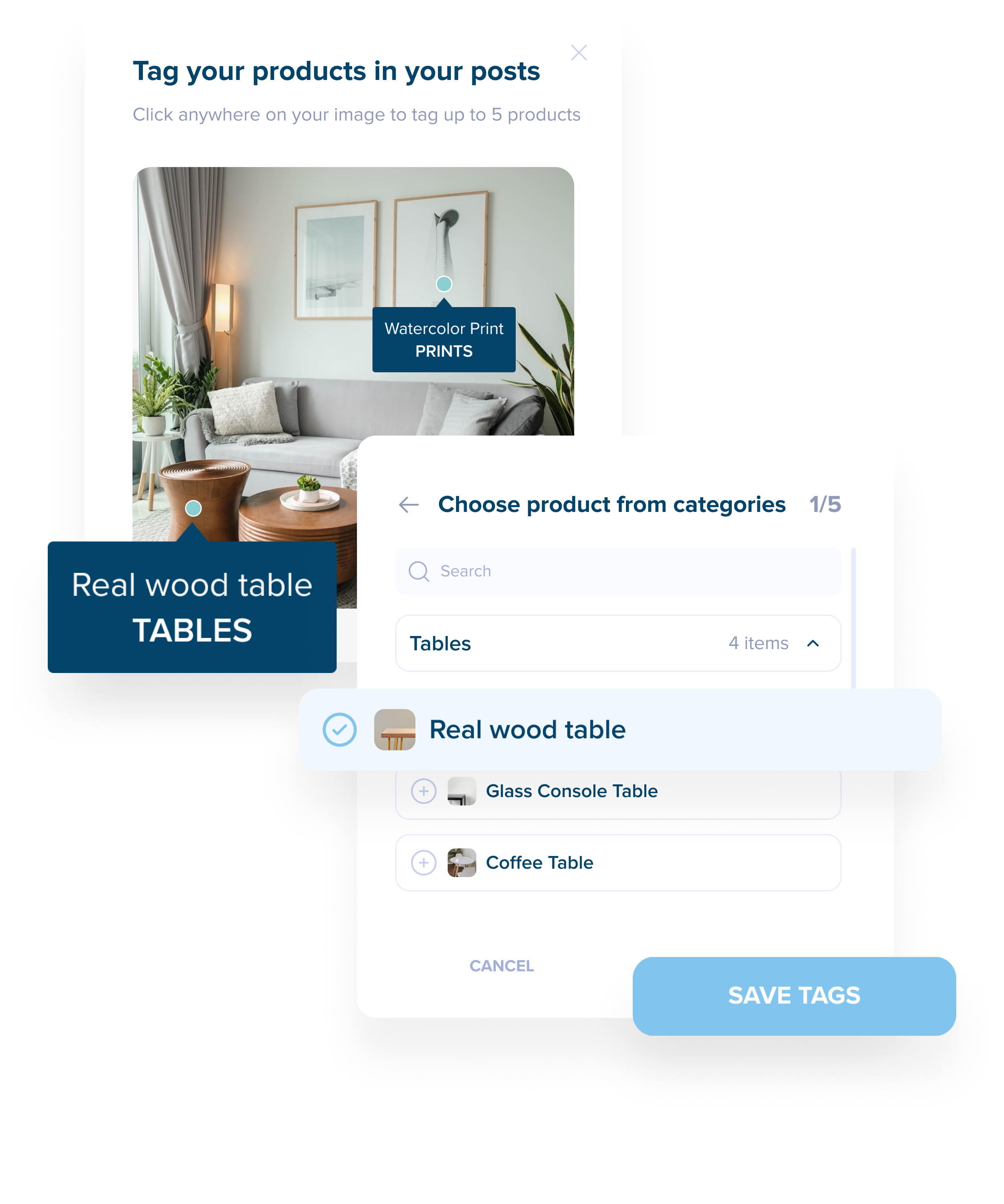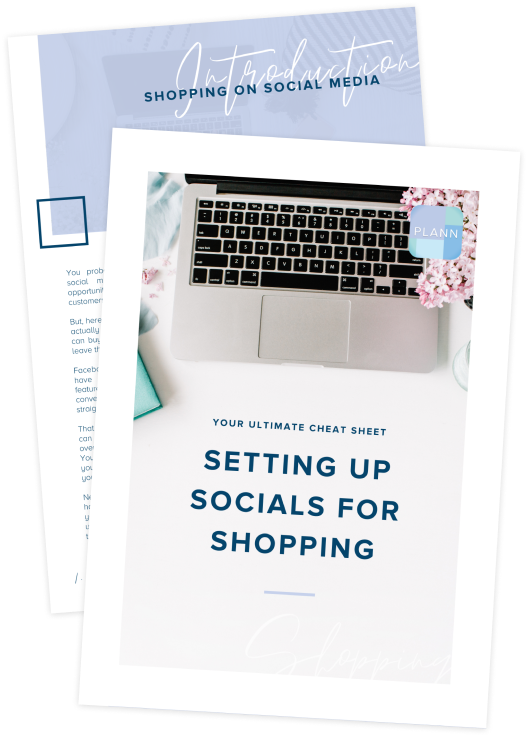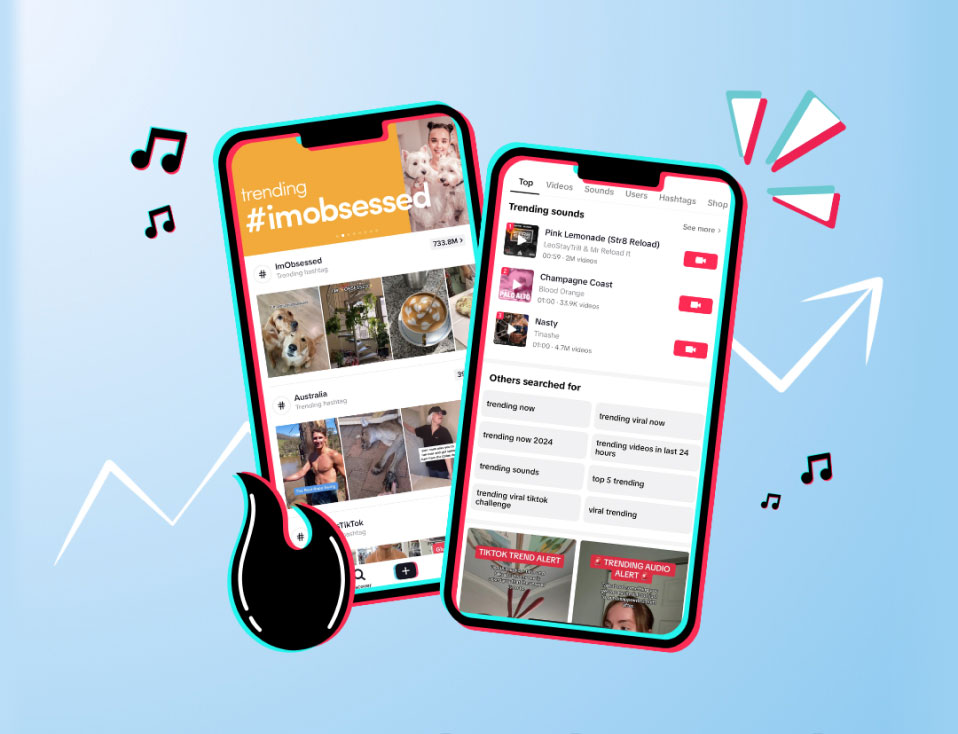Social shopping features are taking social media by storm! Did you know that 53% of users plan to shop more on socials in the future? A great social store can help brands like yours take the next step towards sales success.
With social shopping, you can seamlessly integrate social media and e-commerce features, making the most of in-built sales channels and engagement opportunities. This provides new brands with great growth opportunities while also delivering a positive customer experience.
Find out how you can set up social shopping across TikTok, Instagram, Facebook, YouTube, and Pinterest. Here’s Plann’s 101 guide to everything you should know.
Understanding Social Shopping: 5 platforms to leverage
Social shopping is a goldmine for business owners who want to turn their digital presence and online community into real cash buyers.
There are a variety of different platforms providing social shopping options. Some apps offer shoppable posts or live shopping activities, while others adopt in-app marketplaces that make it easy for users to window shop in a virtual environment. This mix allows various models to target unique audiences and consumer groups.
What all social shopping platforms have in common is their power to facilitate real-time communication with buyers. On social media, you can easily connect with your customers, answering questions and controlling the narrative until you’re sure you’ve delivered a great experience.
Let’s dive into the social shopping platforms you need to know about.
Platform 1: TikTok Shop
TikTok Shop provides a full-service shopping portal designed to help users discover your brand and place orders with ease. You can even access secure checkout and order management tools!
Shop it Like Gatorade
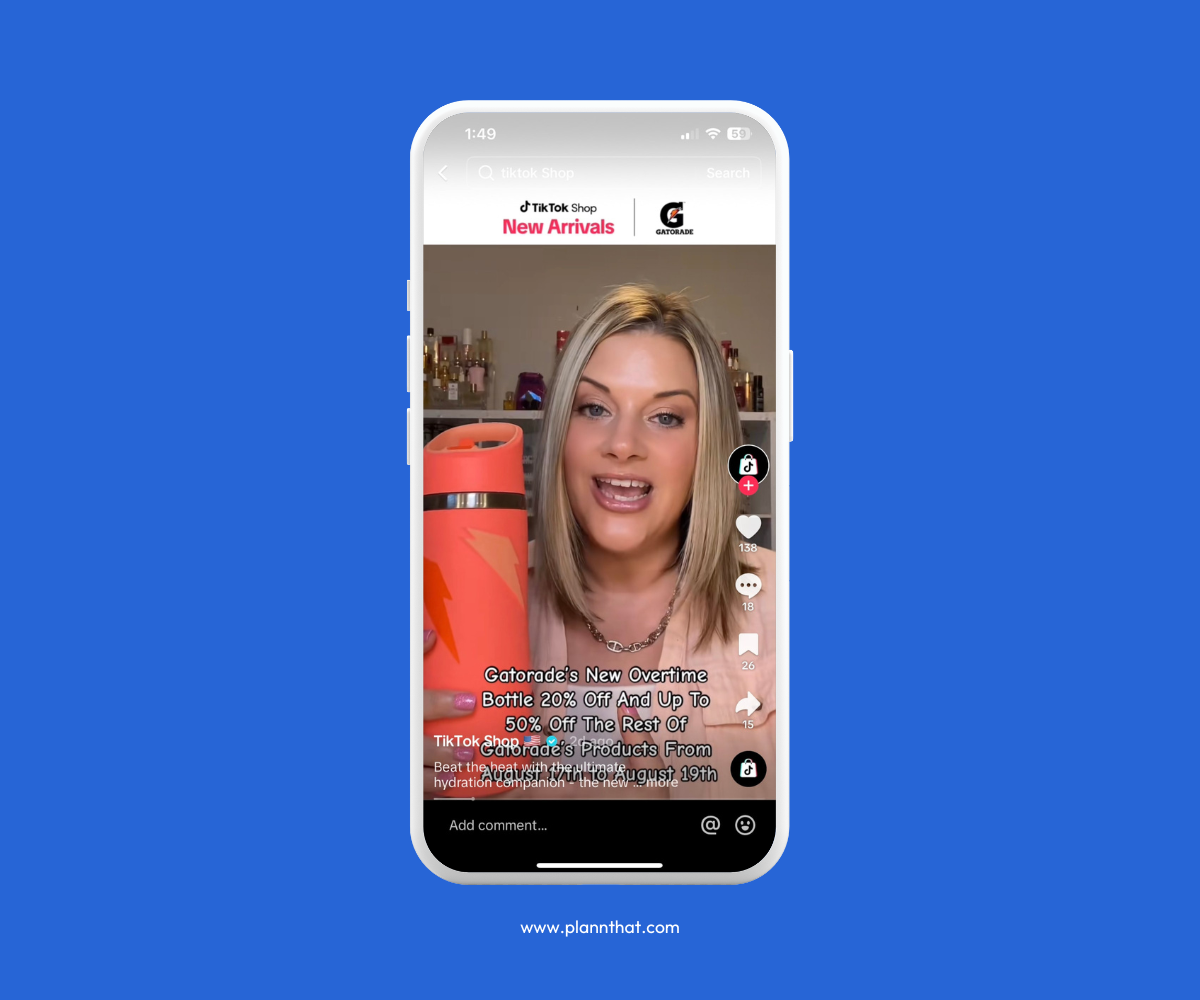
A blonde influencer advertises discount on Gatorade’s new overtime bottle, in orange.
Get started with TikTok Shop
Step 1: Set up a TikTok business account, and submit any relevant identity documents for approval.
Step 2: Once you’re a registered seller, access the Seller Center to upload products.
Step 3: Work with creators to promote your products, including via the TikTok Shop Affilitate program.
Step 4: Create shoppable videos, or facilitate live shopping by tagging your products in content.
Step 5: Check on your sales performance in the TikTok Seller Center analytics dashboard.
Strategies for Success
- Capture compelling video content with a clear hook that stops the scroll.
- Use the start of your video to highlight the pain points your product can solve.
- Connect with popular TikTok creators who can help you reach a wider audience.
Platform 2: Instagram Shop
With Instagram Shop, you can tag products and create shoppable stories and guides, easily creating a multi-format selling solution. This is a great way to get people talking about your brand fast.
Tag Products Like Shop Peche

@shop_peche use product tags to highlight two shoe designs on an Instagram grid posts.
Get started with Instagram Shop
Step 1: Set up an Instagram business or creator account.
Step 2: Access the Commerce Manager to set up sale channels and checkout options. Add products to your catalog, either manually or importing from an e-commerce database.
Step 3: Submit your account for Instagram review, and provide any necessary details.
Step 4: Turn on Instagram shopping by selecting ‘Business,’ then ‘Shopping’ and choosing your product catalog in Instagram settings.
Step 5: Start tagging your products in your new Instagram posts, reels, guides, and stories.
Strategies for Success
- Craft a mix of posts, reels, stories, and guides to share on the Instagram app.
- Highlight your brand identity alongside key product details that compel users to buy.
- Work with established Instagrammers who share a similar niche or audience.
Platform 3: Facebook Shop
Facebook Shop can be easily integrated with Instagram, with excellent options for advertising product listings, including both paid and organic tactics.
Create a Catalog Like Techi
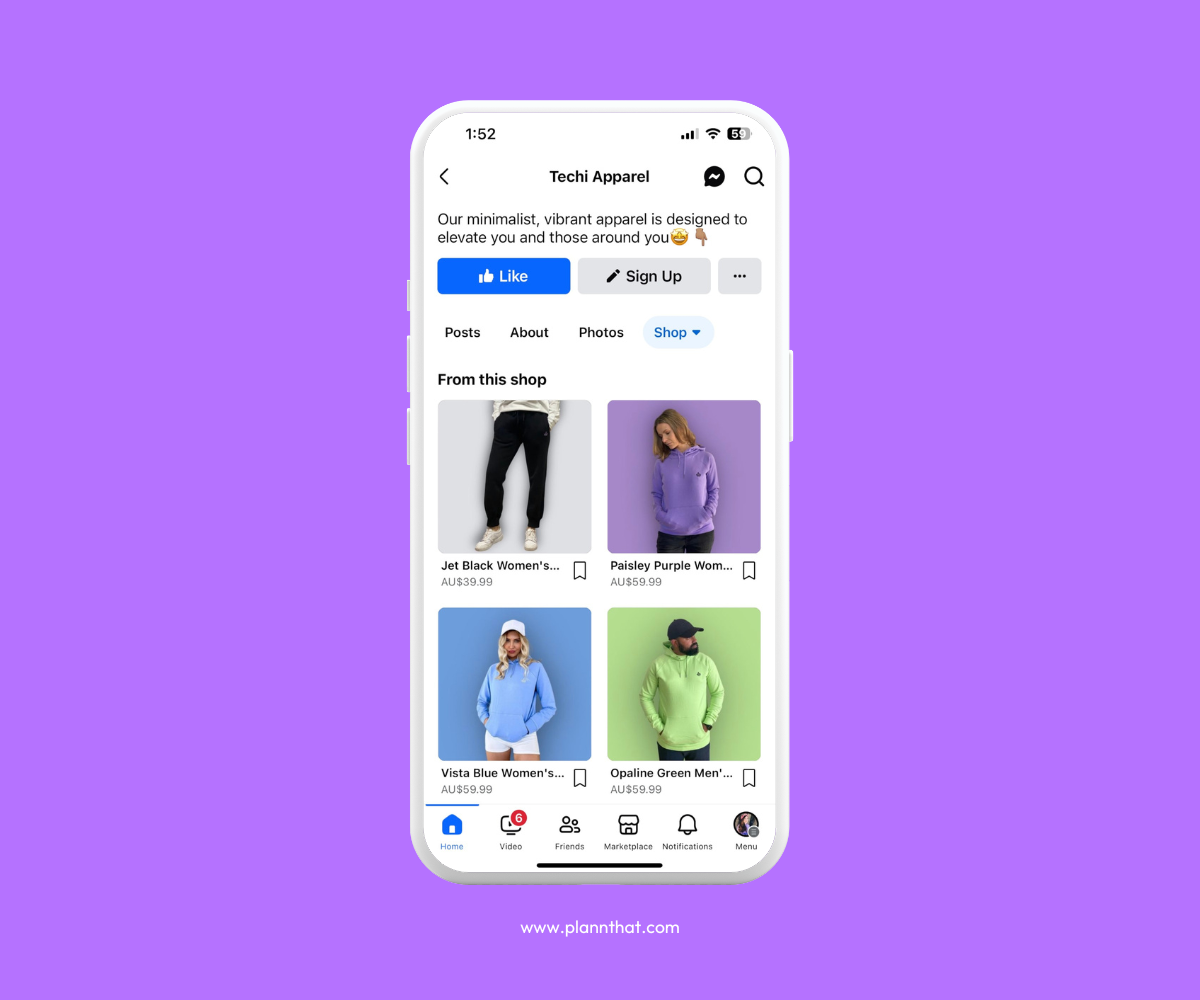
Techi Apparel showcase a catalog of loungewear products on Facebook Shop.
Get started with Facebook Shop
Step 1: Create a Facebook business page. Then navigate to the ‘Get Started’ menu, and create a shop.
Step 2: Either create a shop from an existing Shopify account, or set up a shop from scratch using the Commerce Manager.
Step 3: Choose checkout options, and link your Instagram account if applicable.
Step 4: Select the relevant product catalog, which you can update at your leisure within your Facebook business page, managing products and creating collections as needed.
Step 5: Review and agree to the Seller Agreement and finish setup to launch your shop.
Strategies for Success
- Learn your way around the Facebook Marketplace in addition to on-page shopping options.
- Don’t be afraid to link your Facebook store to your Instagram account for cross-platform control.
- Share compelling product images and descriptions that highlight key selling points.
Platform 4: YouTube Shopping
YouTube Shopping makes it easy to reach new customers with exciting, innovative video content. You can use a mix of shoppable cards and product links in video descriptions, as well as crafting shoppable tutorials, reviews, and unboxings.
Get started with YouTube Shopping
Step 1: Sign up and log into the YouTube Studio.
Step 2: Select the menu at the top left of your screen, and choose ‘Earn.’
Step 3: Navigate to the Shopping tab, which will only open if you have an eligible account.
Step 4: ‘Get Started’ to create your store, or ‘Connect new store’ on the product card, and follow the prompts to get set up.
Step 5: Advertise your product listings. Add links to your products in video descriptions, or add cards to your videos, leading users directly to what you’re selling.
Strategies for Success
- Ensure that your YouTube videos clearly highlight the value of your products.
- Use a mix of long-form videos and YouTube shorts to advertise your items.
- Aim to deliver a seamless shopping experience across both desktop and mobile devices.
Platform 5: Pinterest Shop
The Pinterest app provides great shopping capabilities, from shoppable pins that boost product discovery to rich pins that provide users with more detailed information.
Share Product Pins on Pinterest
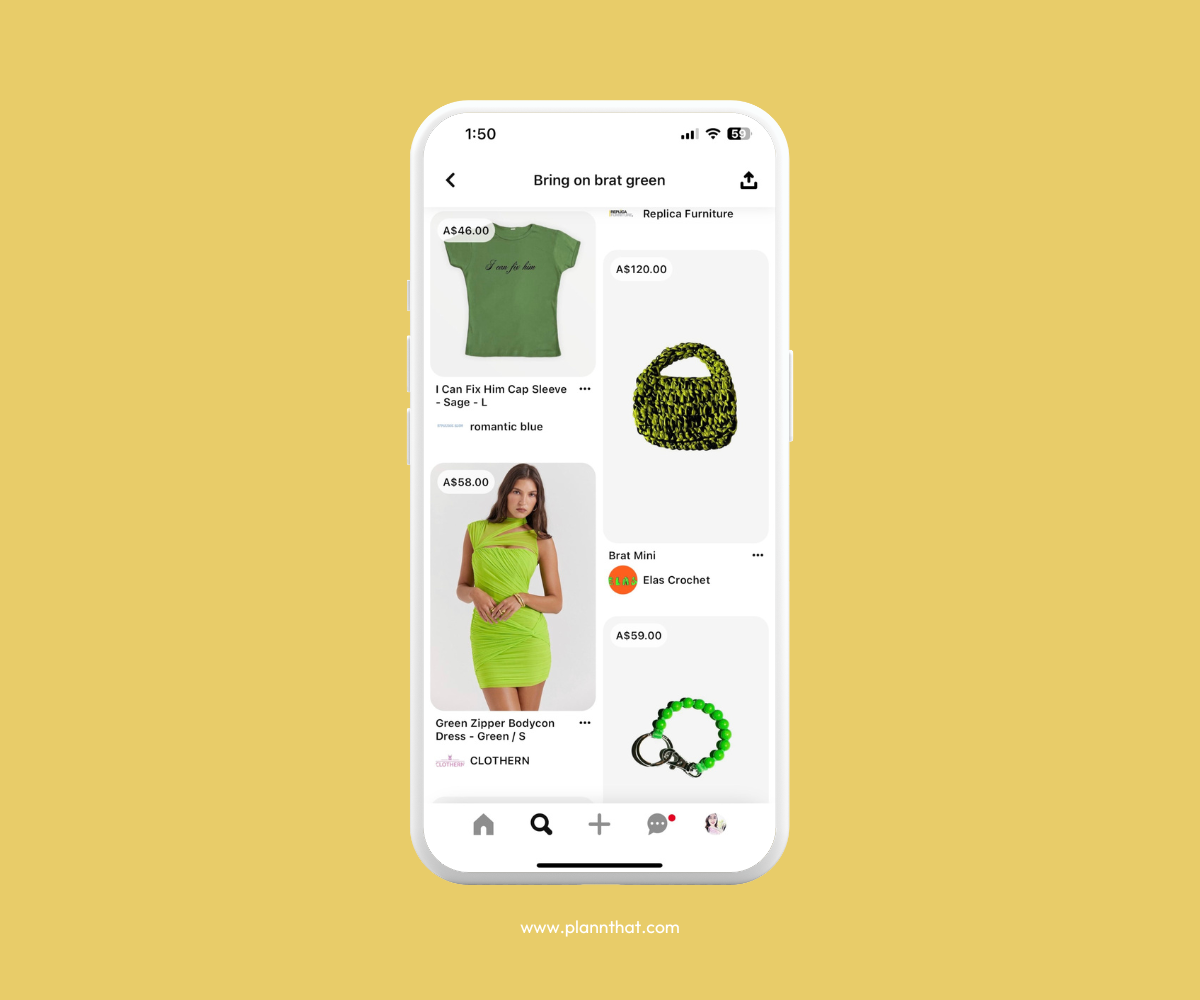
A range of #brat green products are displayed as product pins, with pricing attached.
Get started with Pinterest Shop
Step 1: Get started with a Pinterest business account.
Step 2: Upload product data using catalogs, provided you have an existing data feed.
Step 3: Alternatively, connect an existing e-commerce platform to automatically upload product information.
Step 4: Start creating product pins , using a clear video or image alongside an informative and keyword-rich title and description.
Step 5: Manually tag individual products, including a link to where users can buy them, creating easy-to-navigate Pinterest product pins.
Strategies for Success
- Prioritize high-quality images and videos that pique audience interest.
- Use high-level SEO to describe products well and make them easier to find in search.
- Cross-link each specific product listing to your website or another purchase destination.
Social Shopping: Measuring Success and Optimization
When it comes to measuring the success of your social shopping approach, there are a few metrics can you turn to.
Across your website and all the platforms you sell on, keep a close eye on content reach and engagement trends. This can improve your understanding of what works best for your brand.
Use a mix of in-built insights and external analytics tools to monitor customer behaviors and preferences, and use this information to optimize your ongoing strategy in line with what users like best about your business.
Social Shopping FAQs, Answered
Wondering how you can promote your products on social media and drive more traffic (and sales) to your brand? Here are our answers to a few of the most common social shopping questions.
Which social shopping platform is best for my business?
Every business is unique, and that means that the best platform choices may vary. It’s important to think about the tools each shopping model can offer and how these support your specific product type, as well as the audience you serve.
Is it easy to browse products or make a purchase? Can you direct traffic straight to your website and other sales channels? Are you choosing the social networks where your consumers spend most of their time?
Plann Tip: Start your social selling journey on your most active social platform, as you’ll likely have the largest and most engaged audience here.
Are there costs involved in social shopping?
When it comes to setting up a social shopping platform, it can be easy to focus on what you sell and the money you can earn, but remember that you may also need to account for costs. While most social networks allow brands to start listing products for free, many platforms apply small fees or transaction charges when you make a sale.
That’s not accounting for the money you may need to spend on advertising specific products to make sure you reach the right customers through paid social ads!
How can I drive traffic to my social shop?
Driving traffic to your social shop is the number-one way to connect with more customers and earn more sales for your brand. Fortunately, there are many things you can do to boost reach and engagement, all without leaving your chosen app.
Create content that makes an impact and highlights the best of your products, including any special deals or discounts on offer. Work with established influencers in your niche who can help create buzz about the items you sell. When all else fails, paid advertising can help you reach the masses and generate extra cross-platform interest.
Plann for Social Shopping
Join the world’s leading brands on the path to greatness! Rely on Plann’s user-friendly e-commerce features, from Insta product tagging to content scheduling and performance analysis.
Ready to kickstart your social store? Sign up for a FREE 7-day trial of Plann, and let us help you expand your sales in no time.
